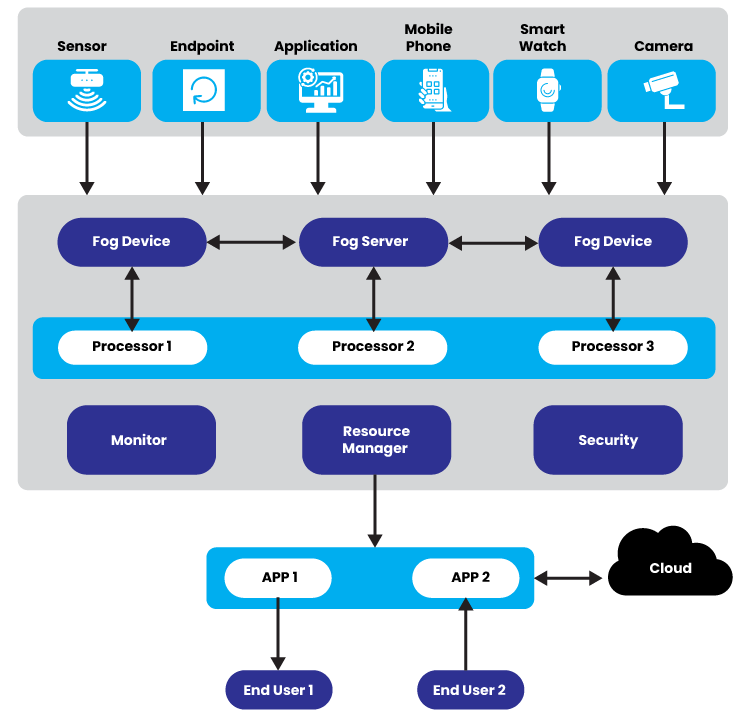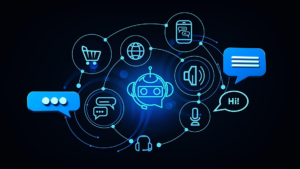

ACL Digital
The Transformative Impact of Fog Computing in IIoT and Manufacturing
The rapid growth of IoT and connected devices has led to an explosion of data generation. According to Domo’s ninth annual ‘Data Never Sleeps’ infographic, by 2021, 65% of the world’s population—around 5.17 billion people—had internet access, and the global data consumption reached 79 zettabytes, a number expected to surpass 180 zettabytes by 2025. As the volume of data continues to skyrocket, traditional cloud computing struggles to keep up with real-time processing and storage demands.
Fog computing offers a solution by decentralizing computing resources and placing them closer to the data sources, such as sensors, devices, and users. This approach reduces latency, lowers cloud storage costs, and enables faster decision-making. By introducing an intermediary layer between edge devices and the cloud, fog computing processes time-sensitive data locally, ensuring that only relevant information is sent to the cloud for long-term storage and analysis. This setup optimizes efficiency, enhances real-time responsiveness, and supports the growing demands of modern industries and IoT ecosystems.
Fog Computing Architecture

Fog computing operates as an intermediary layer between edge devices and cloud servers, optimizing data processing and storage to improve efficiency and reduce latency. Here’s how it functions:
- Devices like sensors, cameras, and controllers collect real-time data such as temperature readings, video streams, or machine status alerts.
- Small computing servers near edge devices analyze and process data locally, reducing unnecessary data transmission by only sending updates for significant changes.
- Fog nodes store data temporarily for quick access during real-time operations, such as triggering alarms or sending fault alerts, minimizing reliance on cloud storage.
- Pre-defined rules enable fog systems to filter and act on data in real time, triggering immediate local alerts when thresholds are breached.
- After local processing, essential data or aggregated results are sent to the cloud for long-term storage and advanced analytics, optimizing bandwidth usage and costs.
- Fog nodes are connected to each other and to centralized cloud servers, enabling seamless communication and efficient data flow within the system.
The Role of Fog Computing in IIoT & Manufacturing
In IIoT and manufacturing, fog computing has become a cornerstone for optimizing operations, ensuring efficiency, and driving innovation. By processing data from IoT devices closer to the production floor, fog computing enables real-time decision-making and automation.
Real-time Decision-Making
In manufacturing, seconds can make the difference between smooth operations and catastrophic failures. Fog nodes provide localized data processing that enables instant responses to critical parameters. For example:
- If sensors detect an overheating issue in a production machine, fog nodes can immediately trigger an emergency shutdown, preventing potential damage or accidents.
- In assembly lines, fog systems can analyze sensor data to detect anomalies and halt operations instantly, ensuring safety and quality control.
Production Line Visualization
Fog computing facilitates localized analytics to create a real-time visualization of the production line. This granular insight into operations enables manufacturers to:
- Identify bottlenecks and inefficiencies.
- Track equipment performance and utilization rates.
- Monitor production metrics such as cycle times, defect rates, and output levels in real-time.
Predictive Maintenance
Continuous monitoring of equipment through sensors is a hallmark of IIoT-enabled manufacturing. Fog computing enhances predictive maintenance by:
- Processing sensor data in real-time to identify early signs of wear or failure in machinery components.
- Sending alerts to maintenance teams before a breakdown occurs, minimizing unplanned downtime.
- Integrating with machine learning models to predict the lifespan of equipment and schedule repairs proactively.
For instance, in automotive manufacturing, predictive maintenance powered by fog computing can prevent delays caused by sudden machinery failures.
On-the-Fly Adjustments
Dynamic production environments require the ability to adapt quickly. Fog computing enables real-time adjustments by analyzing data as it is generated. For example:
- In precision manufacturing, if sensors detect deviations in dimensions or tolerances, fog nodes can instruct machines to recalibrate instantly.
- If market demands change, fog-based systems can adjust production schedules and resource allocations without requiring significant downtime or manual intervention.
These capabilities ensure that manufacturers can maintain high-quality standards while responding flexibly to changing conditions.
Enabling Digital Twins
Fog computing supports the creation of digital twins—virtual replicas of physical systems or processes. By processing real-time data locally, fog nodes ensure that digital twins are updated instantaneously, offering:
- Real-time simulations to test and optimize production changes before implementation.
- Enhanced troubleshooting by visualizing issues in the digital environment.
- Support for training operators using simulations of actual production scenarios.
Fog Computing vs. Edge Computing
While fog computing and edge computing share similarities, their distinctions lie in how they approach data processing and communication.
| Aspect | Fog Computing | Edge Computing |
| Scope | Extends cloud services to edge devices | Focuses solely on processing at the edge |
| Data Flow | Facilitates both vertical (cloud-edge) and horizontal (device-device) communication | Primarily vertical (device-cloud) |
| Latency Reduction | Reduces latency with distributed processing | Minimizes latency by processing at the source |
| Applications | Ideal for large-scale IoT ecosystems | Best suited for localized environments |
Examples and Use Cases of Fog Computing
While cloud computing is widely used, fog computing is gaining attention for its ability to resolve latency issues commonly found in IoT devices. By processing data closer to where it is generated, fog computing reduces the need for data to travel long distances to the cloud, improving real-time responsiveness.
Smart Homes
Fog computing is commonly applied in smart home systems, where it enhances the automation and efficiency of various devices. For instance, a smart home might include a climate control system like the Nest Learning Thermostat, lighting systems that adjust based on occupancy, automatic sprinklers based on weather data, and security alarms. Fog computing enables these systems to process data locally, ensuring quick actions. For example, sprinklers can automatically turn on when the temperature rises, or the alarm system can trigger based on a detected security breach, all without needing cloud-based intervention.
Smart Cities
In smart cities, fog computing plays a crucial role in creating more efficient and responsive urban environments. From managing traffic to waste collection, fog computing helps to process data from sensors in real-time. For traffic management, sensors at intersections detect pedestrians, vehicles, and cyclists, measuring their speed and potential collision risks. Fog computing processes this data locally, enabling the traffic lights to adjust instantly, allowing for smoother traffic flow and reduced congestion. Similarly, waste management systems use fog computing to monitor garbage levels and schedule timely pickups.
Video Surveillance
Video surveillance systems produce large amounts of data, which can be costly and slow to transfer to the cloud. Fog computing addresses this challenge by processing video feeds locally at the edge, close to where they are captured. In public spaces, such as malls or city streets, fog nodes can analyze video footage in real time, identifying unusual behavior or crowd anomalies. This helps to detect potential security threats or incidents like violence immediately, alerting authorities without the delay associated with sending data to a central cloud server.
Healthcare
The healthcare industry is highly regulated, with mandatory standards like HIPAA that hospitals and healthcare providers must adhere to. To improve patient care and respond effectively to emergencies, the sector continuously seeks innovative solutions. One such solution involves using real-time data from wearables, blood glucose monitors, and health apps to detect signs of distress in the body. In critical situations—such as a stroke—a few seconds of delay in processing this data can be life-threatening. Therefore, it’s essential that this data is processed without latency to ensure immediate action and the best possible patient outcomes.
Conclusion
Fog computing is a transformative technology that bridges the gap between edge devices and centralized cloud systems. By processing data locally and reducing dependency on the cloud, it ensures real-time responsiveness, cost efficiency, and improved resource management. Its role in industries like manufacturing, healthcare, smart cities, and IoT ecosystems highlights its potential to drive innovation and meet modern data demands. As the world becomes increasingly connected, fog computing offers a scalable and intelligent solution for managing the explosion of data in a decentralized manner.
For the latest updates or additional information, feel free to contact ACL Digital.



